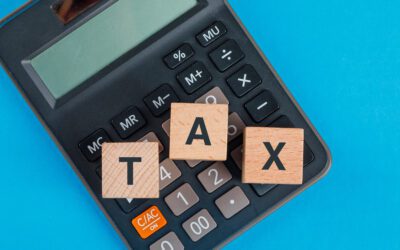Tax season can be a stressful time for any business owner. Doing it all alone is the biggest risk you can take. Tax filing isn’t an easy task; it requires better knowledge and understanding to reach the point of accuracy. But with careful tax-saving strategies for business owners, you can significantly reduce your tax burden and keep more money in your pocket to reinvest in your company’s growth.
Here are 5 smart tax planning strategies for companies in Canada in 2024:
5 Proven Tax-Saving Strategies for Business Owners to Must-Know
Being an entrepreneur requires a sharp tax planning decision to save your money. Here n are the top tax-saving strategies for business owners…
1. Maximize Deductible Expenses
The Canadian Revenue Agency (CRA) allows businesses to deduct a wide range of ordinary and necessary expenses accepted to earn income.
A recent study by the Canadian Federation of Independent Business (CFIB) found that 42% of small business owners reported struggling with managing business expenses. Here are smart tax-saving strategies for business owners.
Reduce Taxable Income: Every dollar you spend on a legitimate business expense lowers your taxable income. This means the CRA taxes a smaller amount, resulting in tax savings.
Examples of Deductible Expenses: Many common business costs qualify for deductions, including:
-
- Rent and utilities for your office space
-
- Office supplies, software subscriptions, and equipment
-
- Marketing and advertising costs
-
- Salaries and benefits paid to employees
-
- Business travel and meal expenses (with limitations)
-
- Professional fees for accountants, lawyers, or consultants
-
- Interest paid on business loans
Record-keeping is key. To claim these deductions, you need to prove the legitimacy of your expenses. The CRA may request documentation, so keep receipts, invoices, and bank statements for all business expenditures.
Categorize Expenses Wisely: Organize your records by expense category for easier tax filing and to ensure you haven’t missed anything.
Stay informed: Tax laws can change, so stay updated on the latest CRA guidelines regarding deductible expenses. You can find information on the CRA website or consult with a tax professional.
2. Invest in Capital Assets
Among other tax-saving strategies for business owners The Capital Cost Allowance (CCA) allows businesses to deduct the cost of capital assets, such as machinery, equipment, and furniture, over a number of years.
The CRA recently introduced new rules for claiming the full cost of certain low-value assets (under $1,500 CAD) in the year they are acquired. This can provide immediate tax relief for many businesses. Here are the tax planning tactics for companies to save their taxes like a pro!
Reduced Tax Bill over a period of time: By claiming a portion of the asset’s cost each year instead of all at once, you reduce your taxable income in the year you buy it and future years as it helps you earn income. This translates to a lower tax bill for over a few years.
Example: Let’s say you invest in a new machine costing $10,000. If you could deduct the entire cost immediately, it would significantly decrease your taxable income for that year.
But with CCA, you deduct a smaller portion of the cost each year. This way, the impact on your taxes is spread out over multiple years.
3. Contribute to Retirement Savings Plans
One of the most important tax-saving strategies for business owners is to contribute to Registered Retirement Savings Plan (RRSP) to reduce their taxable income. Now this won’t save you corp taxes but will reduce your personal tax liability!
According to a 2023 report by BMO, 63% of Canadians feel anxious about their retirement savings, and its latest retirement survey of 2023 reports says that Canadians saw a sharp drop in average checking account balances in 2023, falling 28% to $113,070 compared to $144,613 in 2022.
Here’s what you need to do:
Tax-Deductible Contributions: Contributions you make to your RRSP throughout the year are deducted from your taxable income. This means the CRA taxes a smaller amount, lowering your current tax bill.
Tax-Deferred Growth: The money you contribute to your RRSP and any investment earnings it generates grow tax-deferred. You don’t pay taxes on this growth until you withdraw the funds in retirement.
Example: Your taxable income before RRSP contributions is $50,000 CAD. You contribute $10,000 CAD to your RRSP. Your new taxable income becomes $40,000 CAD, reducing your tax liability. Plus, any growth on your $10,000 contribution within the RRSP remains untaxed until you withdraw it in retirement.
Important Considerations:
Contribution Limits: There’s a maximum amount you can contribute to your RRSP each year. The CRA sets this limit annually, and you can find it on their website.
Tax Implications upon Withdrawal: Remember, the tax deferral benefit comes with a catch-up later. When you withdraw funds from your RRSP in retirement, the withdrawn amount is considered taxable income.
By applying RRSPs strategically, you can save for a comfortable retirement while enjoying significant tax savings throughout your business ownership journey.
4. Claim Available Tax Credits
The Canadian government offers a variety of tax credits to help businesses with everything from research and development to hiring employees. Here’s how they translate to savings for your business:
Reduced Tax Bill: Tax credits directly decrease the amount of tax you owe. Let’s say your tax liability is $10,000 CAD, and you qualify for a $2,000 CAD credit. You’ll only end up paying $8,000 CAD in taxes.
CRA Website: The Canada Revenue Agency’s (CRA) website is a valuable resource. It provides a comprehensive list of available tax credits for businesses, along with eligibility requirements and application processes.
Consult a Tax Professional: A qualified tax professional can be a game-changer. They can assess your business activities and identify relevant tax credits you might be overlooking. Their expertise can ensure you’re claiming everything you’re entitled to and maximizing your tax savings.
Financial Programs: You can also rely on Shalini Dharna, a CFO. I offer tailored financial programs and free resources to help business owners understand tax-saving strategies better.
5. Consider Your Business Structure
The type of business structure you choose can impact your taxes. Sole proprietorships, for example, report business income on their personal tax returns. Here are some tax-saving strategies for business owners.
Structure Choice Matters: The way you structure your business (sole proprietor, corporation, etc.) affects how you file taxes and how much you pay.
Sole Proprietorships: Simplest structure: business income taxed on your personal return. Good for low-income startups, but no separation of personal and business assets.
Corporations: a separate legal entity that pays a lower corporate tax rate than top personal rates. Profits can be reinvested tax-deferred within the company. More complex and comes with administrative costs.
Tax Advantages of Incorporation: Split income with family members in lower tax brackets (with criteria); defer taxes on profits you don’t withdraw.
Choosing the Right Structure: Consider complexity, liability protection, and tax benefits, and consult a tax professional for personalized advice.
So, these were the most useful tax-saving strategies for business owners, which have the potential to save money to a great extent.
Bottom line!
By implementing these smart tax-saving strategies for business owners, you can keep more money in your pockets and invest it back into your company’s growth.
Remember, tax laws can be complex, so it’s always a good idea to consult with a qualified tax professional or make yourself knowledgeable by taking advantage of tax-saving programs for business owners without breaking the bank.
Therefore, doing tax planning for your company ensures you’re complying with all regulations and taking advantage of all the tax breaks available to you.


